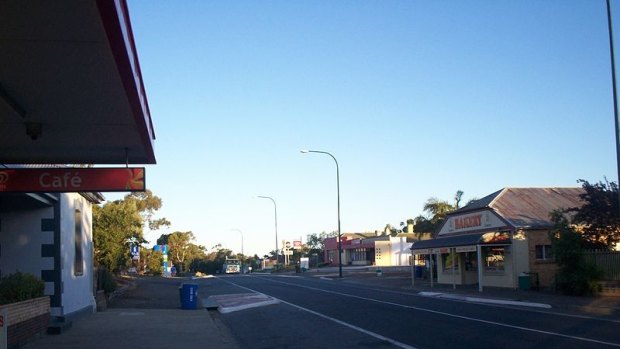This was published 9 years ago
Truro, South Australia: Travel guide and things to do

Truro, SA
Located 87 km north east of Adelaide on the Sturt Highway, Truro isn't really a Barossa Valley township although it does fall into the larger Barossa area in the sense that it was part of the original land purchase by George Fife Angas.
Prior to European settlement a small number of Aborigines were well established in the district. They lived on a diet of grass seeds (made into a kind of damper), kangaroos, wallabies, possums, lizards and fish and protected themselves against the winter cold with possum skin rugs. Their life was simple but perfectly in tune with the climate, flora and fauna of the region.
Soon after the arrival of colonists in South Australia in July, 1836 expeditions were sent out to explore the hinterland. By December 1837 explorers had reached Lyndoch and by 1838 other explorers had reached the Murray River passing through the Barossa Valley and past modern day Truro.
The valley was named by Colonel Light after Barrosa (Hill of Roses) in Spain where he had fought against the French in 1811 in the Peninsula War. The spelling mistake was never corrected.
By 1839 Colonel Light, the Surveyor General of South Australia, was selling off large tracts of land in the valley. Charles Flaxman, the agent for George Fife Angas, purchased 28,000 acres in May, 1842 and in 1847-48 Angas's son, John Howard Angas and the Deputy Surveyor-General, Thomas Burr, laid out the township of Truro. It is said that John Angas named the town after Truro in Cornwall although this is questionable as Cornish miners moved into the area in 1842 to exploit copper at the Whealbarton Mine. It is likely the miners named the town Truro. The mine prospered until the 1860s but copper continued to be mined in the area until the 1970s.
Things to see
Historic Buildings
Truro has a number of historically significant buildings including the Uniting Church, the Primary School, the bank, post office and council chambers.
Heroes Park
On the southern side of town, about a block away from the main street, is Heroes Park which is pleasant with picnic facilities and, when it has been raining, a river running through it.
Moculta
Moculta is located 8 km south of Truro and is characterised by a number of attractive stone buildings. Moculta House, an abandoned group of picturesque stone ruins associated with an important Romanesque Mausoleum, is located 1.5 kms to the north east on a knoll above the settlement.
Sign up for the Traveller Deals newsletter
Get exclusive travel deals delivered straight to your inbox. Sign up now.